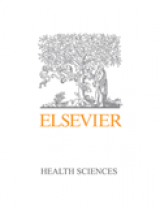Learn not only how to recognize high-quality research, but how to improve your own research and apply it to patient care. Plus, find out how to start a journal club, write quality case reports and how to most effectively present your research to others. This book is ideal guide for students at both graduate and undergraduate levels who might be having difficulty with research concepts as well as for practiced clinicians interested in a fresh approach to clinical research.
Key Features
* A jargon-free guide to understanding and conducting research
* Uses metaphors, visual images, and examples to simplify complex research concepts
* Includes easy-to-do computer exercises to help you understand statistical concepts
Author Information
By Mitchell Batavia, PhD, PT, Associate Professor of Physical Therapy, School of Education, New York University, New York, NY, USA
HOW TO USE THIS BOOK AND OVERVIEW: The Boat Metaphor; Why Research?; ANATOMY AND PHYSIOLOGY: UNDERSTANDING RESEARCH CONCEPTS: Anatomy: Understanding the Research Process; Questions; Hypotheses; Theory; Designs; Sampling; Measurement; Descriptive Statistics; Inferential Statistics; Tests of Significance; Putting It All Together: Matching Question-Design-Analysis; The Function of Research; PATHOLOGY and VACCINATIONS: Mistakes with the Investigator; Mistakes with the Treatment; Mistakes with the Subjects; Mistakes in Measurement; Mistakes in Conducting Studies over Time; Mistakes in Math; THE EXAMINATION: FINDING MISTAKES IN STUDIES: Evaluating Research: Is It Believable?; Where to Find It in a Report; CLINICIANS AND GRADUATE STUDENTS: Just for Clinicians; Just for Graduate Students; The Future: A Final Word...or Two...or Three; Appendix A: Resources; Appendix B: List of Potential Biases in Research
"...contributes to physical therapist practice by providing a simplified framework that helps readers develop a base understanding and appreciation of research... The book's content is jargon-free and is presented in a clear and concise manner. It includes abundant figures, tables, and examples... Several chapters conclude with a section called 'Things to Do,' which may challenge the reader to apply the concepts to appropriate situations... A strength of this book is the extensive assortment of examples the author uses to highlight important concepts. Overall...a worthwhile resource for students, clinicians, and educators involved in research."Physical Therapy
the author presents the information in an engaging writing style that supports his desire to provide a non-technical, informative text. In addition, readers will find the illustrations throughout the text (which were done by the author) to be useful and entertaining. Overall, I believe this book would be of use to students, educators, and clinicians in the health professions and would be an excellent addition to the health professional's library."Journal of Orthopaedic & Sports Physical Therapy


